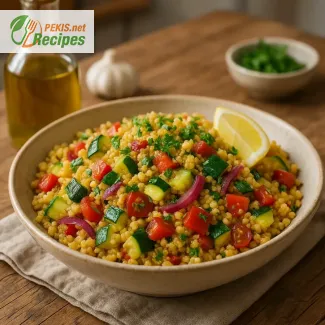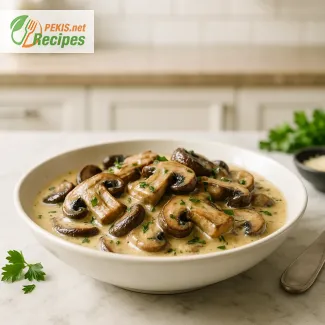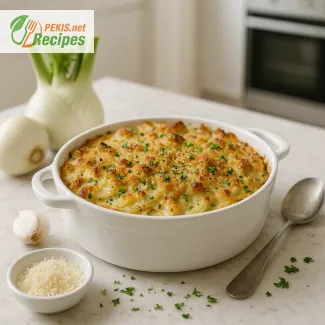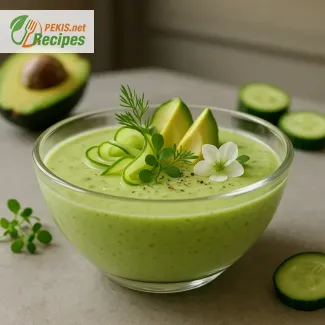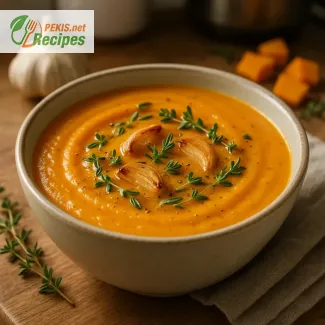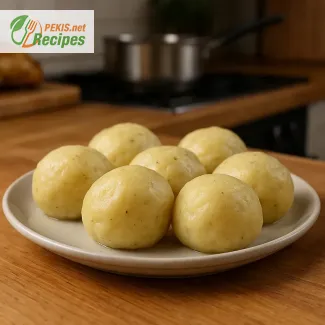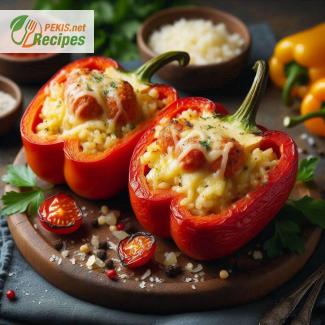
Irresistible Stuffed Peppers with a Cheesy and Savory Rice Filling
A classic comfort dish with a delicious twist
Stuffed peppers with cheese and rice are a timeless culinary delight that brings together the rich flavors of tender bell peppers, creamy melted cheese, and perfectly seasoned rice. This dish is not only visually appealing but also a satisfying and wholesome meal that can be enjoyed by the whole family. Whether served as a hearty main course or an elegant side dish, these stuffed peppers deliver a combination of flavors and textures that are simply irresistible.
The magic of this recipe lies in its harmonious blend of ingredients. The bell peppers provide a natural sweetness and a slight crunch, contrasting beautifully with the soft, cheesy, and flavorful rice filling. The cheese melts into the rice, creating a creamy consistency that enhances every bite. This dish is also highly versatile, allowing for the addition of various herbs, spices, and extra ingredients to suit personal preferences.
The perfect balance of flavors and textures
One of the most appealing aspects of stuffed peppers is their balanced composition. The earthy taste of rice, combined with the saltiness of cheese and the sweet, slightly smoky aroma of baked bell peppers, creates a perfectly satisfying meal. Each bite offers a delightful contrast of soft and crispy textures, making this dish both comforting and exciting.
For those who enjoy a cheesy touch, using a combination of mild and sharp cheeses can elevate the flavors even further. Cheddar, mozzarella, feta, or parmesan can all be excellent choices, each bringing its own unique character to the dish. The gooey melted cheese binds the ingredients together, ensuring that each forkful is packed with rich, savory goodness.
A wholesome and nourishing meal for any occasion
Aside from its incredible taste, stuffed peppers with cheese and rice are a nutritionally balanced dish. Bell peppers are rich in vitamins C and A, while rice provides sustained energy and fiber. The cheese adds a dose of calcium and protein, making this meal both indulgent and nourishing. This dish can also be customized to accommodate various dietary needs, including vegetarian, gluten-free, and high-protein options.
Whether prepared for a weeknight dinner, a festive gathering, or a meal-prep favorite, stuffed peppers are easy to make and even easier to love. Their vibrant colors and enticing aroma make them a standout dish that impresses both visually and gastronomically.
Customizable to suit every palate
One of the best features of this dish is its adaptability. While the classic version with cheese and rice is already delicious, there are many ways to enhance and personalize it:
- Add protein: Incorporate ground beef, chicken, or plant-based alternatives for a heartier meal.
- Spice it up: Introduce a touch of cumin, smoked paprika, or chili flakes for extra depth of flavor.
- Boost the texture: Mix in nuts, breadcrumbs, or extra vegetables for added crunch.
- Go global: Experiment with Mediterranean, Mexican, or Italian-inspired variations using different herbs and cheeses.
With so many exciting possibilities, this recipe never gets boring. It is a true kitchen staple that can be modified according to seasonal ingredients, taste preferences, or dietary needs.
A simple yet impressive dish to prepare
Stuffed peppers with cheese and rice may look elegant and restaurant-worthy, but they are surprisingly simple to prepare. With just a few basic steps—preparing the filling, stuffing the peppers, and baking until golden and bubbly—this dish comes together effortlessly. Minimal hands-on time makes it ideal for both beginners and experienced home cooks.
For the best results, choosing fresh, firm bell peppers is essential. Their slightly crisp texture ensures they hold up well during baking, allowing the filling to stay moist and flavorful. Pre-cooking the rice and lightly roasting the peppers before stuffing them can also enhance their natural sweetness and tenderness.
The ultimate comfort food with a modern touch
Whether you are looking for a quick and delicious dinner or a versatile meal-prep option, stuffed peppers with cheese and rice tick all the boxes. They are wholesome, flavorful, visually stunning, and endlessly customizable. Each bite is a celebration of simple yet exquisite ingredients, making this dish a must-try for anyone who loves comfort food with a gourmet twist.
From their creamy, cheesy filling to their perfectly roasted exterior, these stuffed peppers are guaranteed to become a household favorite. Whether enjoyed fresh out of the oven or reheated the next day, their bold flavors and comforting textures make every meal a truly delightful experience.
- Preparation of Bell Peppers:
Wash the bell peppers thoroughly. Cut off the tops and remove the seeds and membranes. Lightly brush the inside with olive oil and set aside. - Cooking the Rice:
In a medium saucepan, bring the vegetable broth to a boil. Add the rice, reduce heat to low, cover, and let it simmer for about 12–15 minutes until tender. Remove from heat and let it sit for 5 minutes. Fluff the rice with a fork. - Preparing the Filling:
In a large pan, heat olive oil over medium heat. Add chopped onions and sauté for 3 minutes until translucent. Add minced garlic and cook for another minute. Stir in diced tomatoes, smoked paprika, oregano, basil, salt, and pepper. Let it cook for 3–4 minutes, stirring occasionally. - Combining Ingredients:
Add the cooked rice to the pan and mix well. Remove from heat and fold in half of the shredded cheese, stirring until melted and combined. - Stuffing the Peppers:
Preheat the oven to 180°C (350°F). Spoon the rice and cheese mixture into each bell pepper, filling them to the top. Place the stuffed peppers in a baking dish, ensuring they are standing upright. - Baking:
Cover the dish with foil and bake for 25 minutes. Remove the foil, sprinkle the remaining cheese on top, and bake for another 10 minutes until the cheese is golden and bubbly. - Serving:
Remove from the oven and let the peppers rest for 5 minutes before serving. Garnish with fresh parsley if desired.
Elevating Stuffed Peppers with Cheese and Rice: Tips for a Tastier and Healthier Dish
Enhancing flavors with ingredient modifications
A traditional stuffed pepper recipe is already a delicious and satisfying dish, but small modifications can take it to a new level. By carefully selecting ingredients and experimenting with different flavors, you can create a more complex, rich, and well-balanced meal.
- Adding protein for a heartier meal
If you want a more filling and protein-rich dish, consider adding lean ground beef, turkey, or chicken to the filling. These proteins bring a savory depth and umami richness to the dish while complementing the natural sweetness of the bell peppers.- Plant-based alternative: For a vegetarian or vegan version, replace meat with lentils, quinoa, or finely chopped mushrooms. These ingredients provide a meaty texture and absorb flavors beautifully.
- Experimenting with different cheeses
While cheddar and mozzarella are the most commonly used cheeses, experimenting with different varieties can enhance the overall flavor:- Feta or goat cheese: Adds a tangy and slightly salty contrast.
- Parmesan or pecorino: Brings a sharp and nutty complexity.
- Smoked cheese: Imparts a subtle smokiness, adding depth to the dish.
- Introducing extra vegetables
Adding finely chopped zucchini, carrots, or spinach to the rice mixture boosts the nutritional value and brings a fresh, slightly sweet undertone. Mushrooms can add an earthy, umami-rich flavor that deepens the dish's complexity. - Playing with spices and herbs
Enhancing the seasoning can make a big difference in depth and balance:- Cumin and coriander: Bring a warm, slightly citrusy touch.
- Smoked paprika: Enhances the natural sweetness of bell peppers.
- Fresh basil and oregano: Add a Mediterranean twist.
- Chili flakes or cayenne pepper: Introduce a mild heat for those who love spiciness.
The advantages of homemade stuffed peppers
Preparing stuffed peppers from scratch not only allows you to control the ingredients and flavors but also offers health benefits and superior freshness compared to store-bought or pre-made options.
- Fresher ingredients: Homemade stuffed peppers contain no preservatives or artificial additives, making them healthier and more flavorful.
- Control over sodium and fat content: Many processed stuffed peppers or ready-made meals contain excess salt and unhealthy fats. By making them at home, you can adjust the seasoning to your preference.
- Personalized flavors: Cooking at home gives you the freedom to customize the filling and experiment with different ingredients.
- Better texture: Homemade stuffed peppers are tender yet firm, while store-bought versions often become soggy due to excess moisture.
Common mistakes and how to avoid them
Even though stuffed peppers are a simple dish, a few common mistakes can impact the final result. Here’s what to watch out for:
- Using raw rice without pre-cooking
If the rice isn't partially cooked before stuffing, it may turn out undercooked and too firm. Using pre-cooked or parboiled rice ensures the filling is soft and evenly cooked. - Overstuffing the peppers
While it may be tempting to pack in as much filling as possible, overstuffing can cause the peppers to split during baking. Leaving a small gap at the top prevents spillage and ensures even cooking. - Skipping pre-roasting the peppers
Pre-roasting the peppers for 5–7 minutes before stuffing enhances their natural sweetness and prevents them from being too crunchy after baking. - Using too much liquid
Excess moisture in the filling can result in soggy stuffed peppers. Draining diced tomatoes properly and ensuring cooked rice is not overly wet helps maintain a perfect texture.
Healthier alternatives for a nutritious twist
For those looking to make this dish healthier, there are several simple modifications that enhance nutritional value without compromising flavor.
- Substituting white rice with whole grains
Instead of white rice, opt for brown rice, quinoa, or bulgur. These grains provide:- More fiber, promoting better digestion.
- Slower digestion, keeping you full for longer.
- A nuttier, more complex flavor.
- Using leaner protein sources
Swap out fatty meats for lean turkey, chicken, or plant-based proteins to reduce saturated fat intake. - Reducing cheese quantity
If you’re looking to lower calories and fat, consider using less cheese or opting for low-fat cheese alternatives. Nutritional yeast can also add a cheesy flavor without dairy. - Adding more fiber-rich vegetables
Increasing the amount of fiber-rich vegetables such as kale, bell peppers, mushrooms, or carrots helps improve gut health and overall well-being.
Transforming stuffed peppers into a gourmet experience
For those who want to turn stuffed peppers into an elevated dish, a few finishing touches can create a restaurant-quality meal:
- Top with a crispy crust
A light breadcrumb topping combined with Parmesan and olive oil creates a crispy golden crust for an extra layer of texture. - Serve with a flavorful sauce
Instead of serving stuffed peppers plain, drizzle with a homemade sauce:- Garlic yogurt sauce: A tangy and creamy contrast.
- Tomato basil sauce: Adds a classic Italian touch.
- Chipotle aioli: Enhances the dish with a smoky, spicy kick.
- Pair with a side dish
A well-chosen side dish can enhance the meal’s overall flavor and balance:- A fresh green salad with a light vinaigrette cuts through the richness.
- Grilled vegetables provide a smoky depth.
- Whole-grain bread helps soak up the delicious juices.
Stuffed peppers with cheese and rice are a versatile dish that can be customized to fit any taste or dietary preference. By adjusting ingredients, cooking methods, and seasonings, you can enhance both flavor and nutritional value while maintaining the dish’s comforting essence. Whether you're aiming for a heartier, spicier, or healthier version, these small changes can elevate the dish to a whole new level of culinary enjoyment.
- Contains: Dairy (cheese).
- Gluten-free: This recipe is naturally gluten-free if the vegetable broth is gluten-free.
- Lactose-free option: Replace cheese with a lactose-free alternative or nutritional yeast for a cheesy flavor.
- Vegan alternative: Use plant-based cheese or omit cheese entirely and add mashed chickpeas or tofu for creaminess.
- Vitamin C: 95 mg (Boosts immune system and promotes collagen production)
- Vitamin A: 3200 IU (Supports vision and skin health)
- Calcium: 180 mg (Essential for bone health)
- Iron: 2.3 mg (Supports oxygen transport in the body)
- Potassium: 580 mg (Regulates muscle contractions and fluid balance)
- Beta-carotene: 1200 µg (Supports eye health and reduces oxidative stress)
- Lycopene: 4000 µg (Reduces inflammation and supports heart health)
- Flavonoids: 15 mg (Protects against cell damage and improves circulation)
